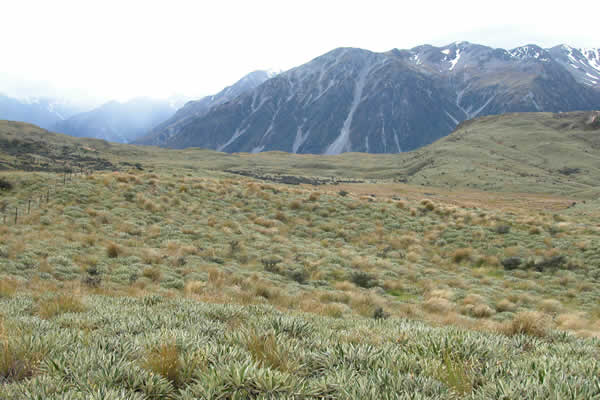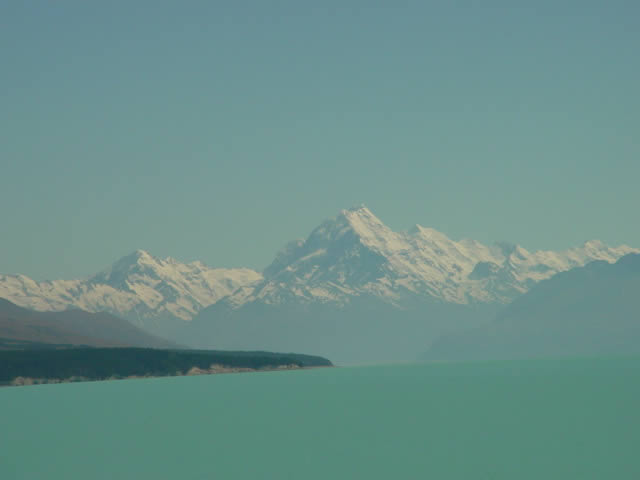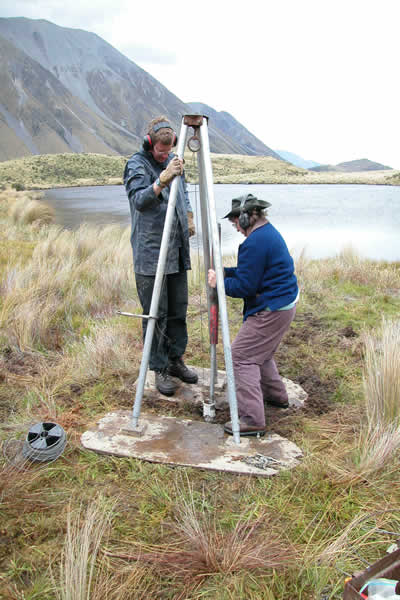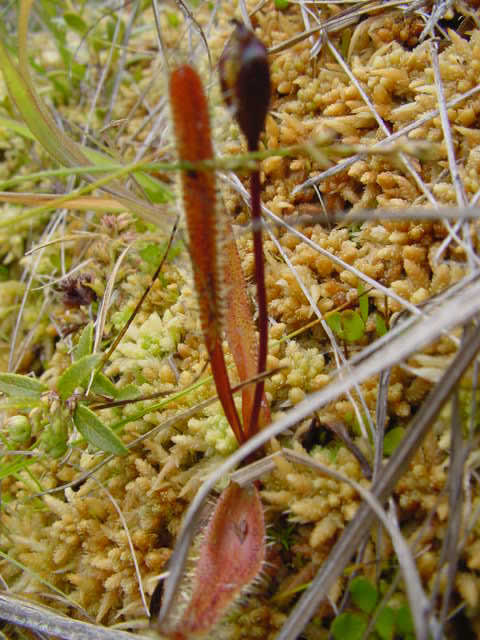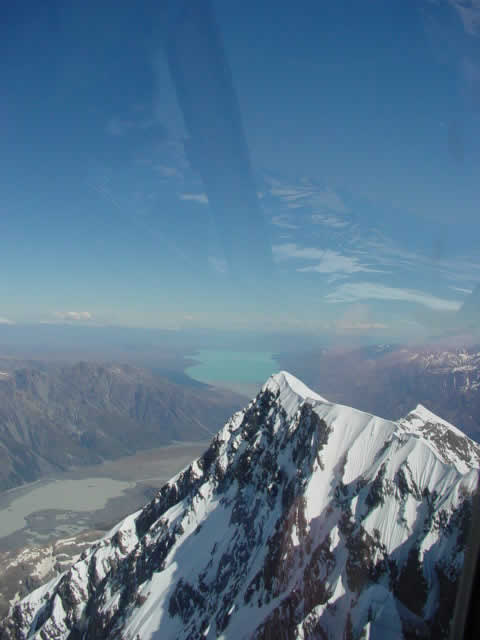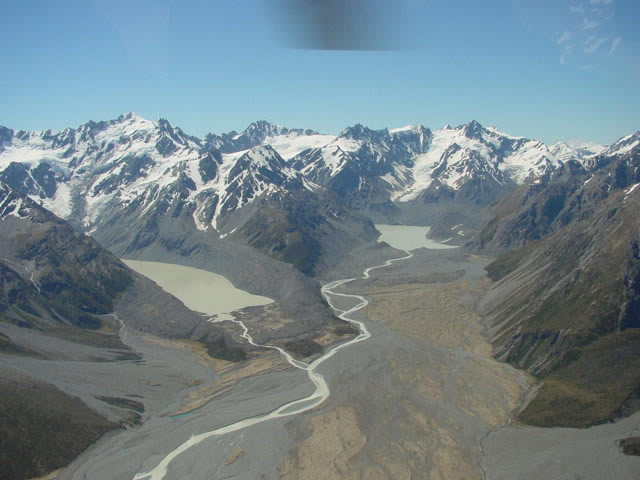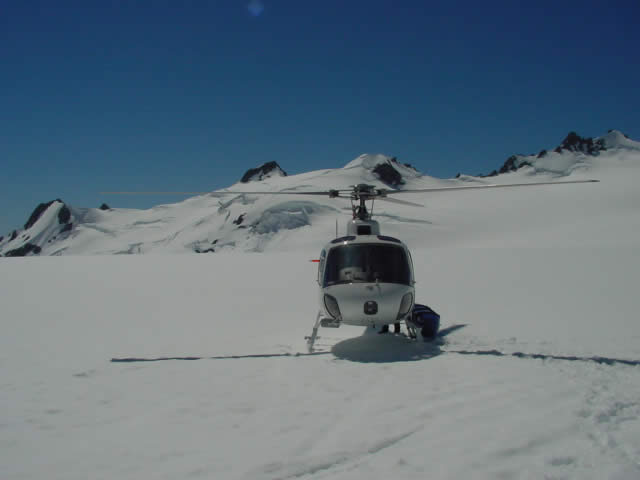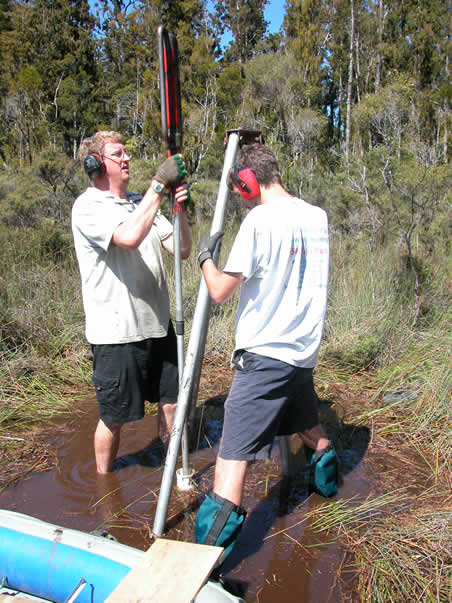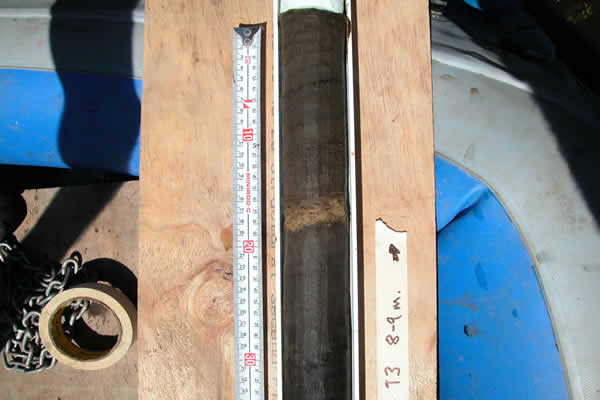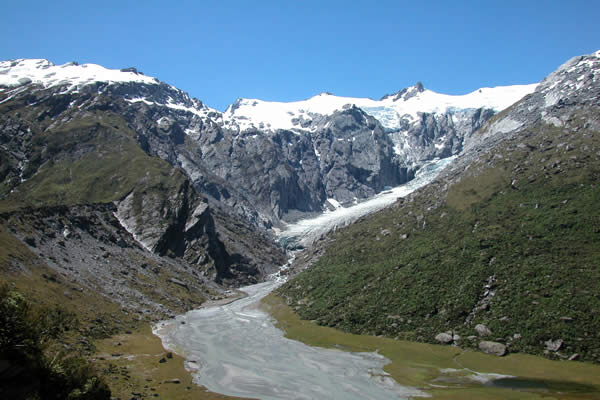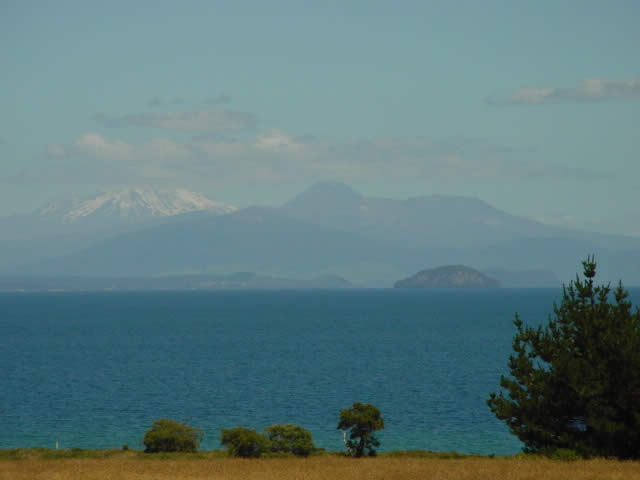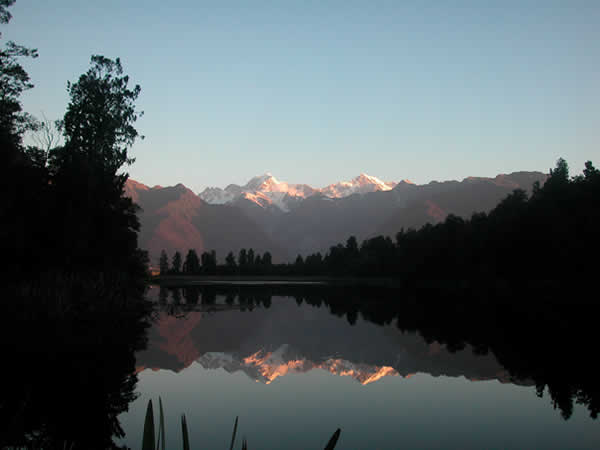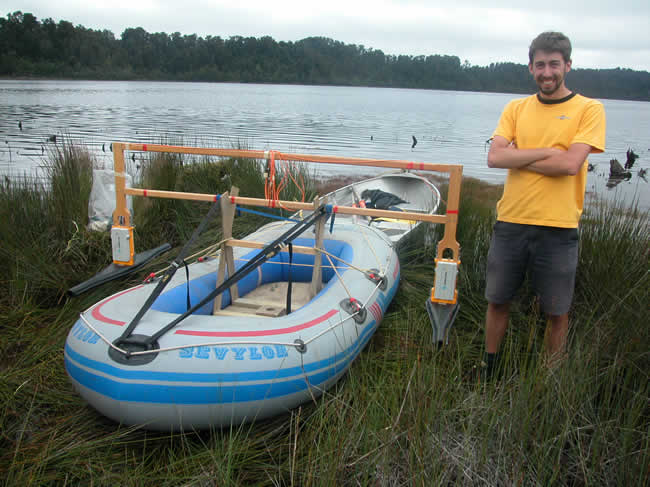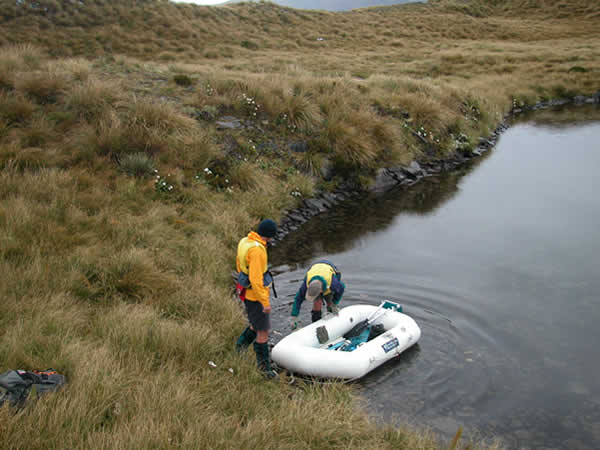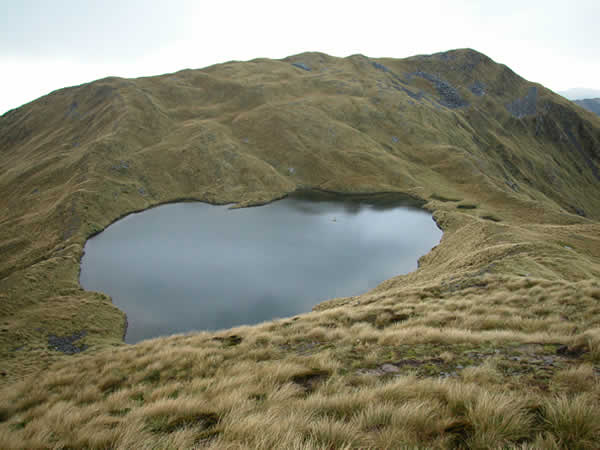Glacial history and climate reconstruction from the South Island, New Zealand
Glacial history and climate reconstruction, South Island, New Zealand
George Denton, Marcus Vandergoes, Ann Dieffenbacher-Krall
January 15 to Feb. 28, 2005
The main objectives of our trip to New Zealand this summer was (1) to develop a standard taxonomy of New Zealand chironomid types, (2) complete outstanding modern sample collection for our chironomid research, (3) collect more paleo-cores for our Last Glacial Maximum (LGM) and deglacial climate reconstructions and (4) continue mapping glacial limits along the West and Eastern margins of the New Zealand Southern Alps.
Week 1
We began this year’s fieldwork in Auckland, N.Z. by meeting with New Zealand researchers Ian Boothroyd and Craig Woodward, both of whom are working with New Zealand chironomids. Dr. Boothroyd has spent years surveying and classifying the species found in New Zealand, some of which are endemic, occurring no where else in the world. Craig is a University of Canterbury doctoral student who, like us, is looking at chironomid remains from lake sediment surface samples across New Zealand to determine ecological preferences. Our work is complementary as we are focusing on different parameters. We met to standardize our identification criteria. By ensuring that we are calling the same chironomid types by the same names, we will be able to better compare our results in the future.Then it was time to travel to the South Island and our field study area the Southern Alps. At Methven we met up with George Denton and his mapping team and while they began the arduous task of field checking their maps and interpretations we headed into the mountains via four-wheel-drive vehicle to re-core one or our paleo-sites, Quagmire Tarn. We were joined on this trip by collaborating researchers Dr. Rewi Newnham and University of Waikato graduate students Tom Whittaker (ex-U. Maine) and Jeremy Cole-Baker who took on the crucial role of field assistants. Quagmire Tarn is of specific interest to this project as it is situated just beyond a late-glacial-age moraine and contains sediment encompassing the entire last glacial termination. We will be obtaining radiocarbon dates on the sediment to confirm the timing of late glacial events and gain minimal ages for ice recession in the area as well as conducting chironomid and pollen analysis to quantify temperature changes.
Conveniently, the lake is filling in with peat, providing a stable platform from which to core. We obtained four cores going through the peat into the lake sediment below. Accommodation for the night was provided by the Downs Hut, which has been used by farmers mustering the sheep for shearing for more than one hundred years. After stopping of to thank the land owners (Phillip and Ann Todhunter) for access to the site and use of the hut we continued back to Methven.
From here the group split up for a few days with Marcus, Tom, and Jeremy heading to the West Coast to begin more coring while Ann joined up with George Denton to field check and observe the glacially sculpted landscapes and currently active alpine glaciers. Joined by Robert Kunzig, who is working on a book about climate change, Ann and George toured glacial features of the Southern Alps. On the West Coast, Marcus and the team were busy up to their knees in water at Galway Tarn, coring of the floating edge of a forest lake. The sediments at this site extend beyond the LGM and have provided a continuous record of vegetation and climate change for approximately the past 40 ka. This site also contains one of the best preserved layers we have found of a volcanic ash (Kawakawa Tephra) associated with an eruption of a North Island volcanoes that occurred during the LGM at around 22.5 14C ka before present. The cores taken this year will be used for chironomid research and to date the changes in pollen and sediment stratigraphy associated with LGM ice advance. Ann rejoined Marcus’ team to collect some more modern chironomid samples and explore the glacial environments of South Westland. We concentrated on filling in some of the gaps in our data set of the last 2 years by sampling sites between 1000-1200m. Yet again it did involve flying into most of these sites as they are often remote or difficult to get to with the sampling equipment. Many of these sites are located in within the moraine ridges or on mountain range crests and provides spectacular environments in which to work.
After a few days Ann departed to begin her return back to U. Maine. Marcus, Tom and Jeremy spent a day doing some site investigations using ground-penetrating radar (GPR) at Alpine Lake then continued further south to the Mataketake Range by Haast Township to collect more modern samples for the chironomid project. Ann’s trip back to the Auckland from the South Island involved crossing to the North Island by ferry then traveling up the entire length of the North Island, which is rich in volcanic features.
While Ann was winging her way home, Marcus spent the rest of his time sub-sampling, photographing and archiving cores and chironomid samples prior to shipment back to U. Maine and meeting up with George Denton’s team to continue mapping work. The field season came to a successful end after a brief stop in Wellington, N.Z. to discuss future collaborative projects with researchers from the Institute of geological and Nuclear Sciences (GNS).
So all in all the trip went exceptionally well, sunny, hot weather, successful field sampling with lots of cores recovered and fantastic scenery. Coming back to winter and a snow covered Maine has been somewhat of a shock.




